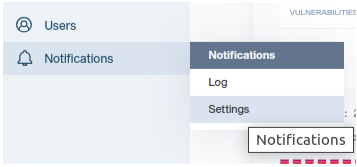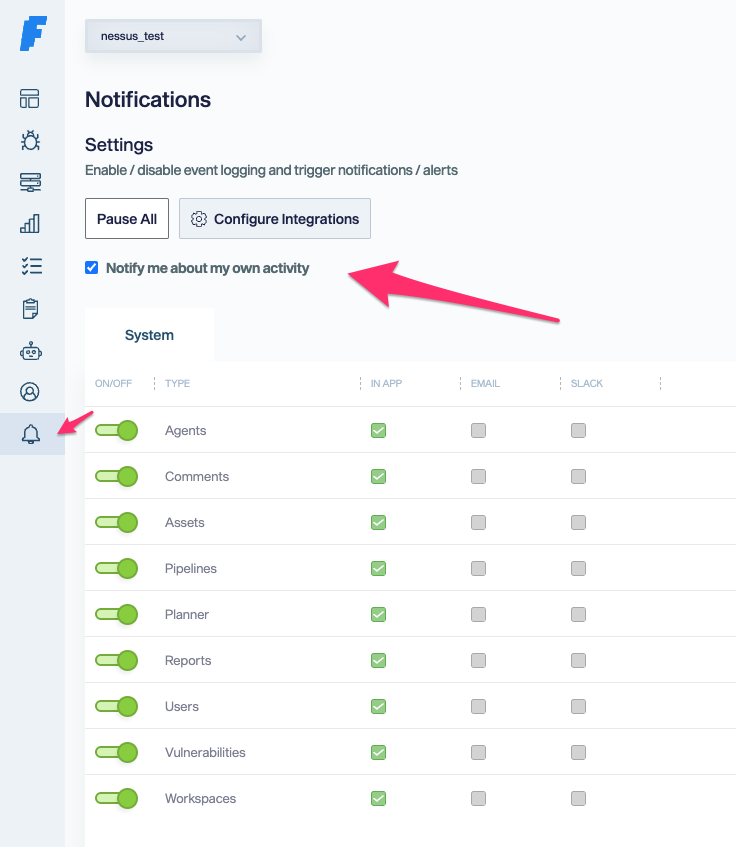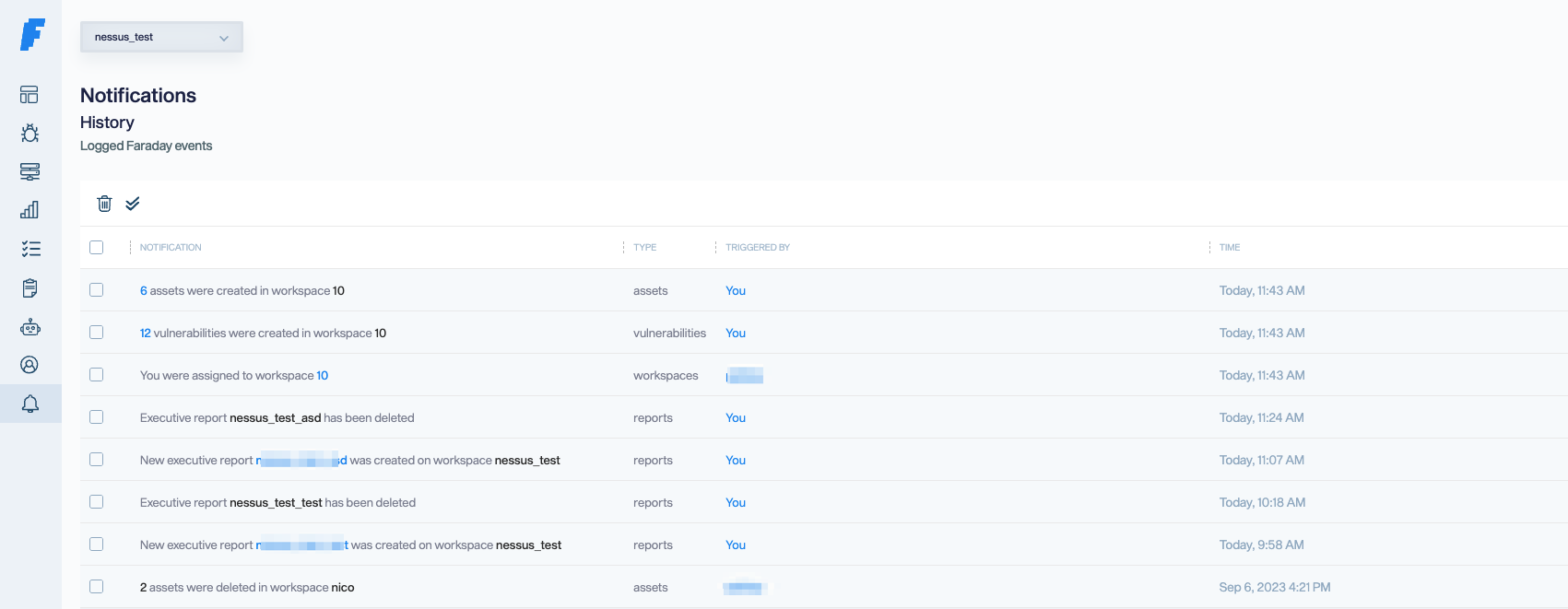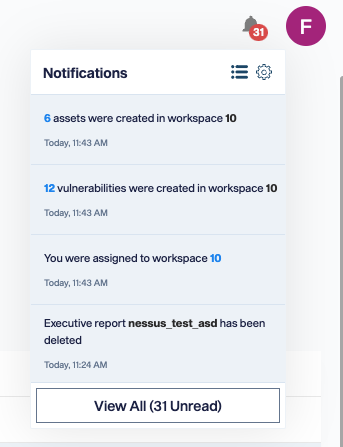Notification Center¶
Faraday's Notification Center feature is tailored to bolster your organization's security posture by delivering timely and customizable alerts related to vulnerabilities, threats, and all other available Faraday features within your license.
Notification Settings¶
You can configure notifications through the Notifications section located in the left panel.

Currently, there are various System Notification Categories available for configuration:
- Agents
- Assets
- Comments
- Pipelines
- Planner
- Reports
- Users
- Vulnerabilities
- Workspaces
The configuration options for each category are contingent upon your license and role.
For users with a Corporate License and Administrator role, all categories are available for configuration by default.
By default, all in-app notifications are enabled. You have the option to disable an entire category using the toggle switch on the left. Disabling a category will halt notifications within that category from reaching you.

If you enable the EMAIL option, notifications from the enabled category will be dispatched to the email address linked to your user account.
Enabling the SLACK option will direct notifications from the enabled category to your Slack workspace (please refer to the Slack integration section for details on configuring Slack).
Typically, notifications for each category are designed to keep users informed about changes in the workspace where they are assigned. Planner notifications specifically inform users about updates to tasks they are assigned or were assigned to. Notifications will not be sent to users without permissions to access the relevant workspace, regardless of whether they have enabled the category.
Though notifications are primarily designed to inform users about background activity or changes initiated by other platform users, users can tailor their notification settings to receive notifications related to their own activity. You can achieve this by toggling on the "Notify me about my own activity" button.
Additionally, you can temporarily pause all notifications using the pause button. This action will halt all notifications to any channel until you choose to resume them using the resume button.
Notifications Log¶
Notifications from all enabled categories will be logged. This log contains a history of all notifications.

Each row in the log represents a notification and includes a brief description, the category it belongs to, who triggered it, and the exact time it was generated.
You can mark all notifications as read using the button. Rows can be selected using the checkbox on the left of each row and deleted using the delete button.
Clicking on a notification row will redirect you to the source of the notification, such as the updated vulnerabilities or planner tasks assigned to you.
In-App Notifications¶
If you select the IN-APP column in the Notification Settings, notifications from the selected category will also appear in the Notifications Bell located at the top right. Clicking on the bell will display the last 4 notifications in a dropdown menu.

A red indicator shows the number of unread notifications in the notification log. You can view all unread notifications by clicking on it at the bottom of the dropdown menu. This action redirects you to the Notifications Log, where you can find both unread and read notifications.
Notifications displayed in the bell, like those in the notification log, can be clicked to be redirected to the source of the notification.
Email Notifications¶
If you select the EMAIL column in the Notification Settings, notifications from the selected category will also be sent to the email address configured in your user account.
Slack Notifications¶
If you select the SLACK column in the Notification Settings, notifications from the selected category will be sent to your Slack account. To enable this integration, a Faraday admin user must complete the steps outlined in the following section.
Advanced Notifications¶
To access the advanced notifications, navigate to the 'Advanced' tab. For more information, refer to the Advanced Notifications Configuration documentation.